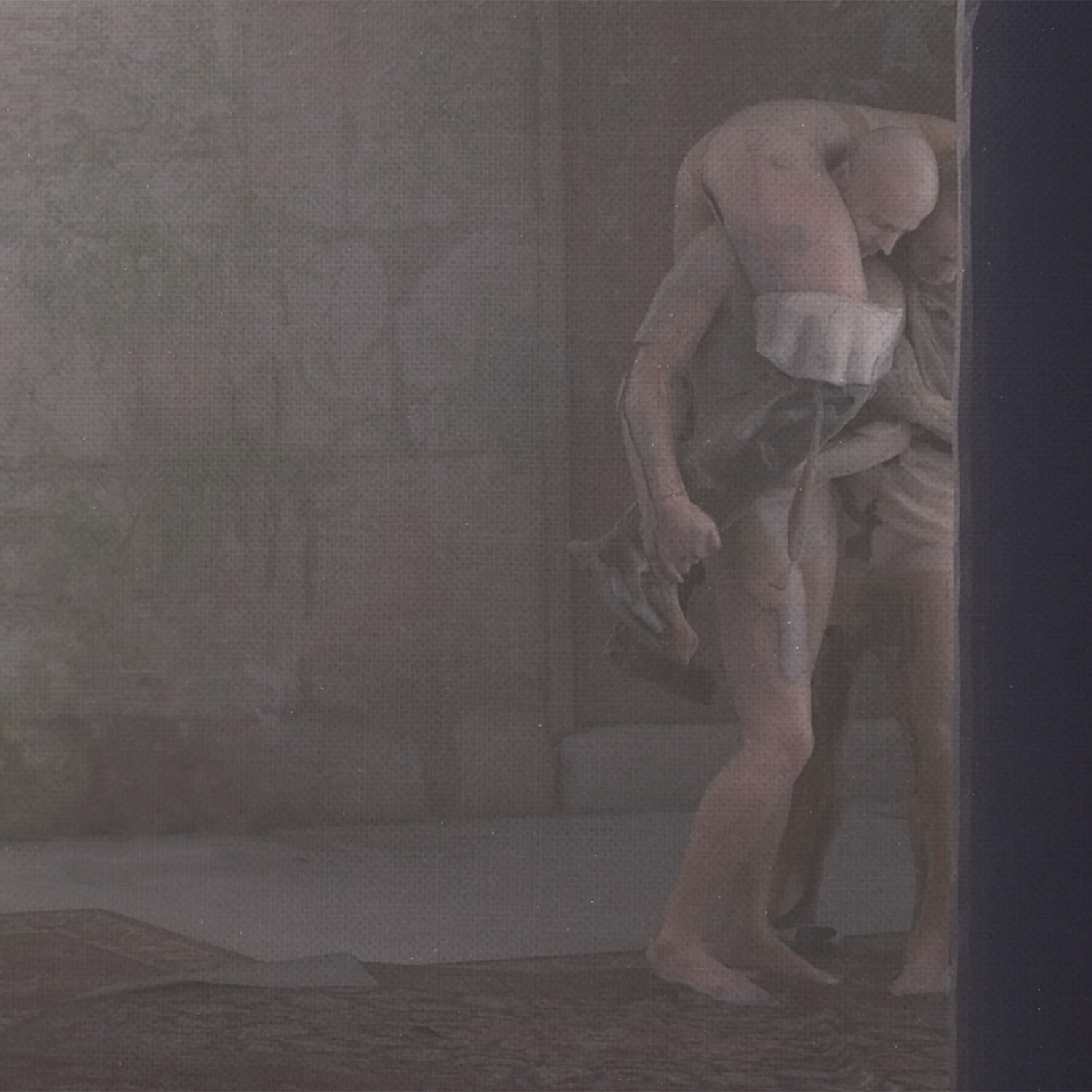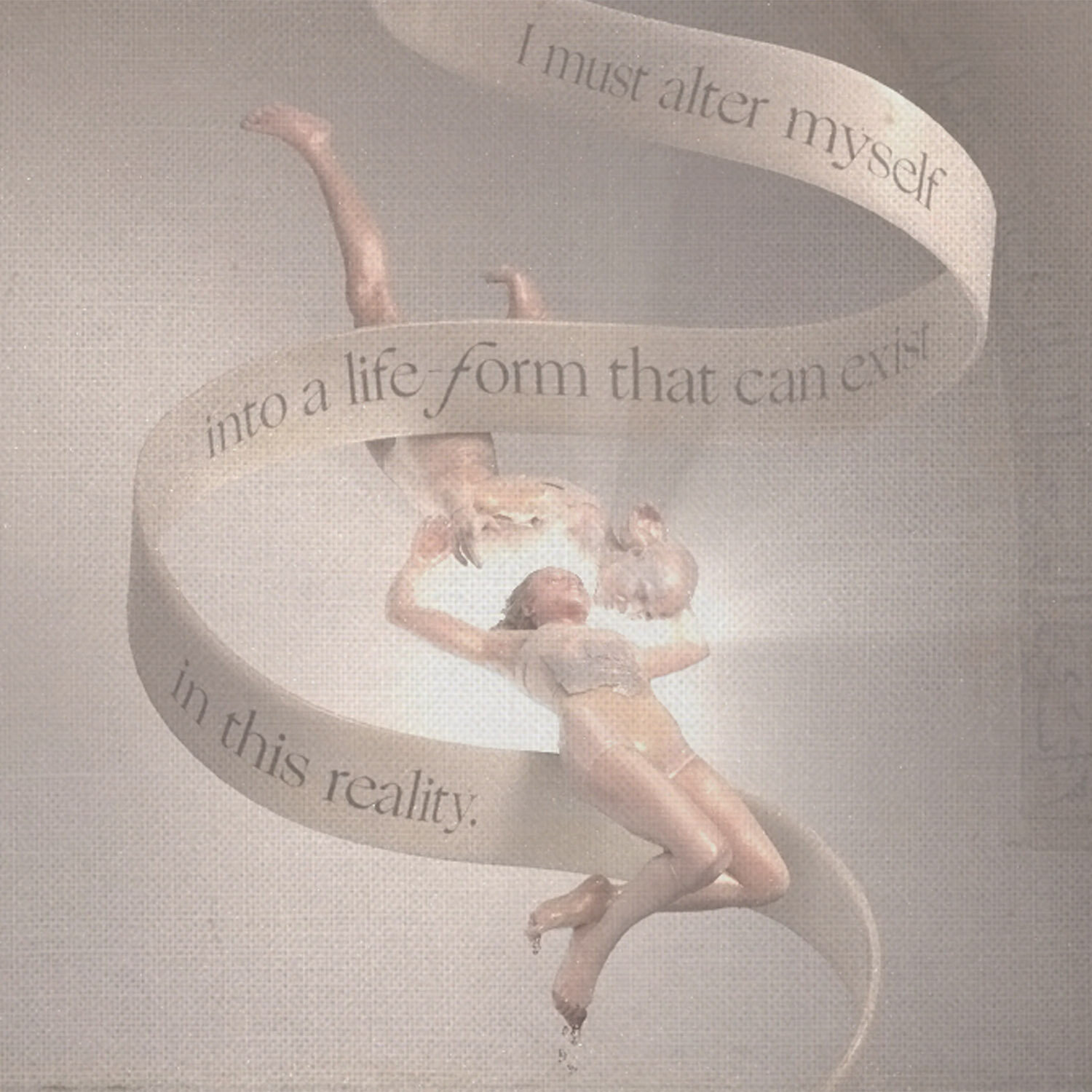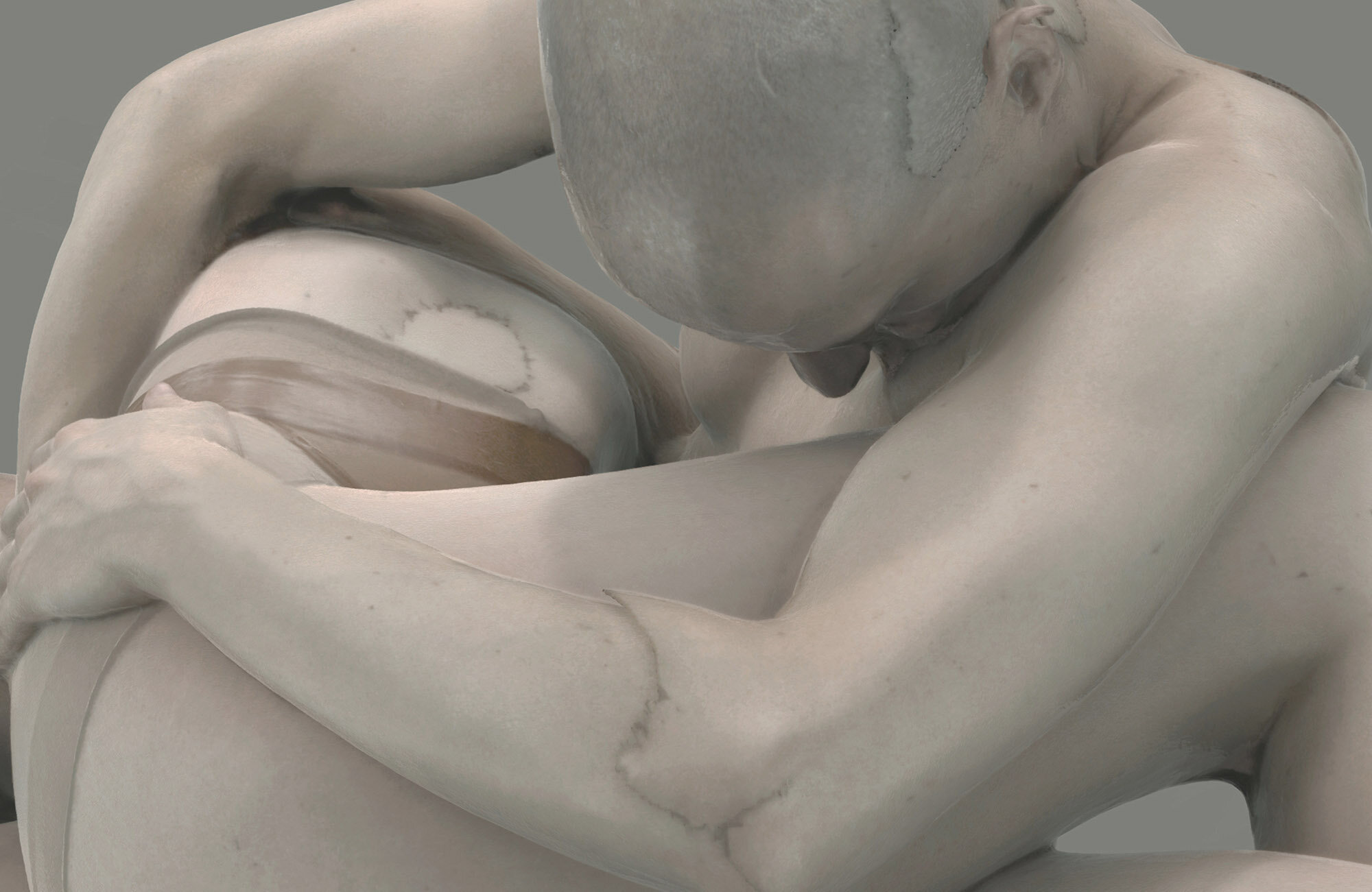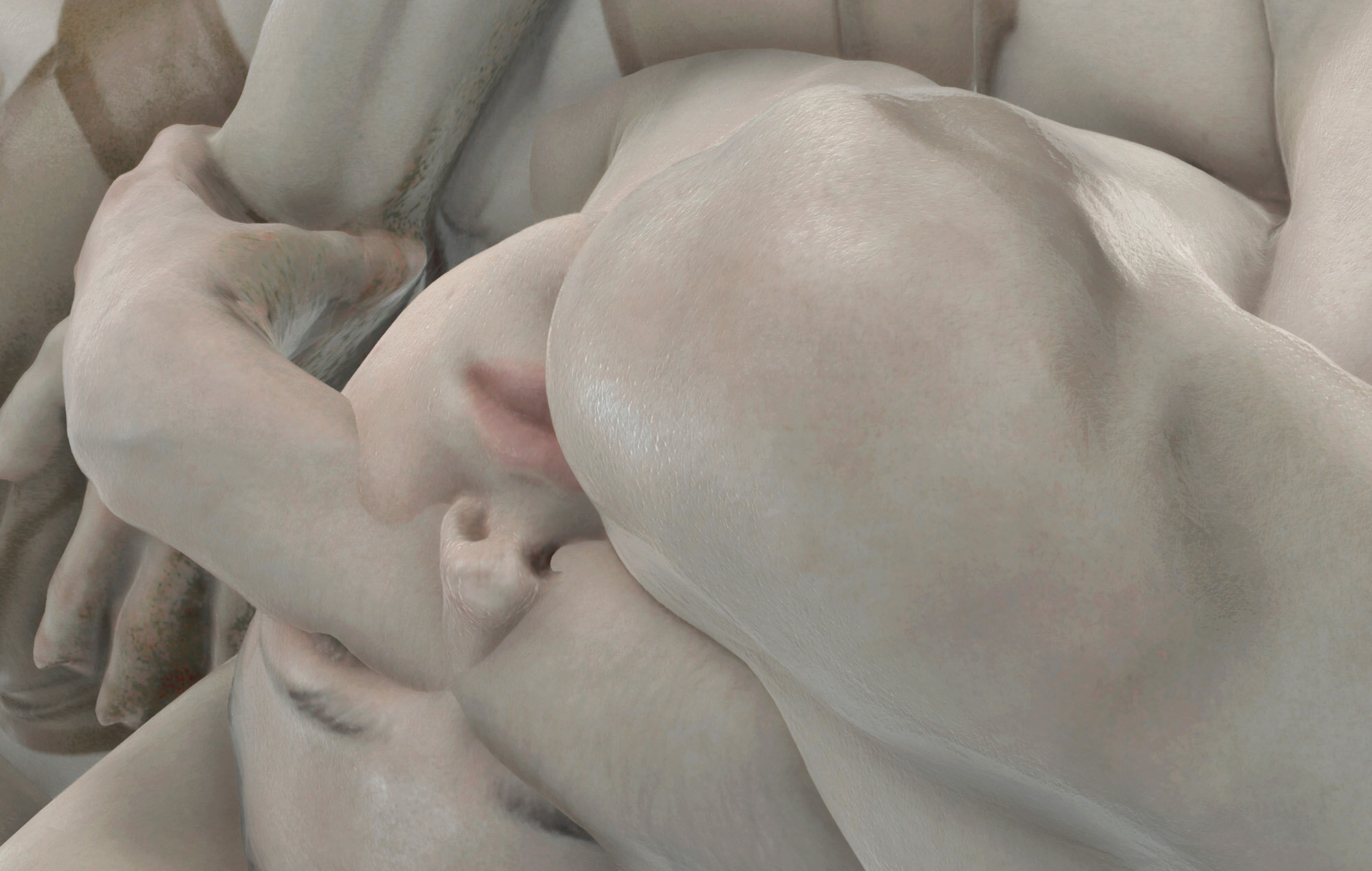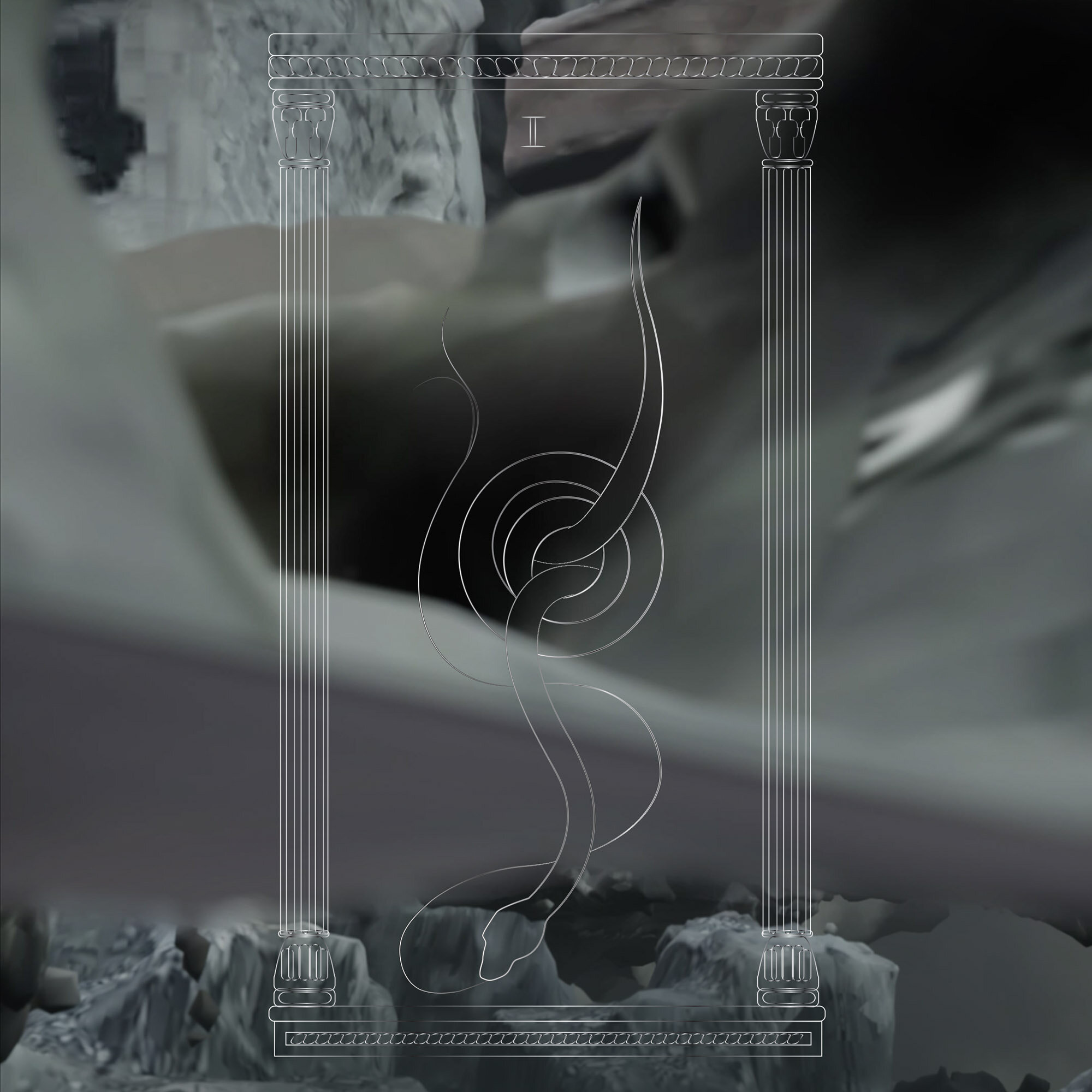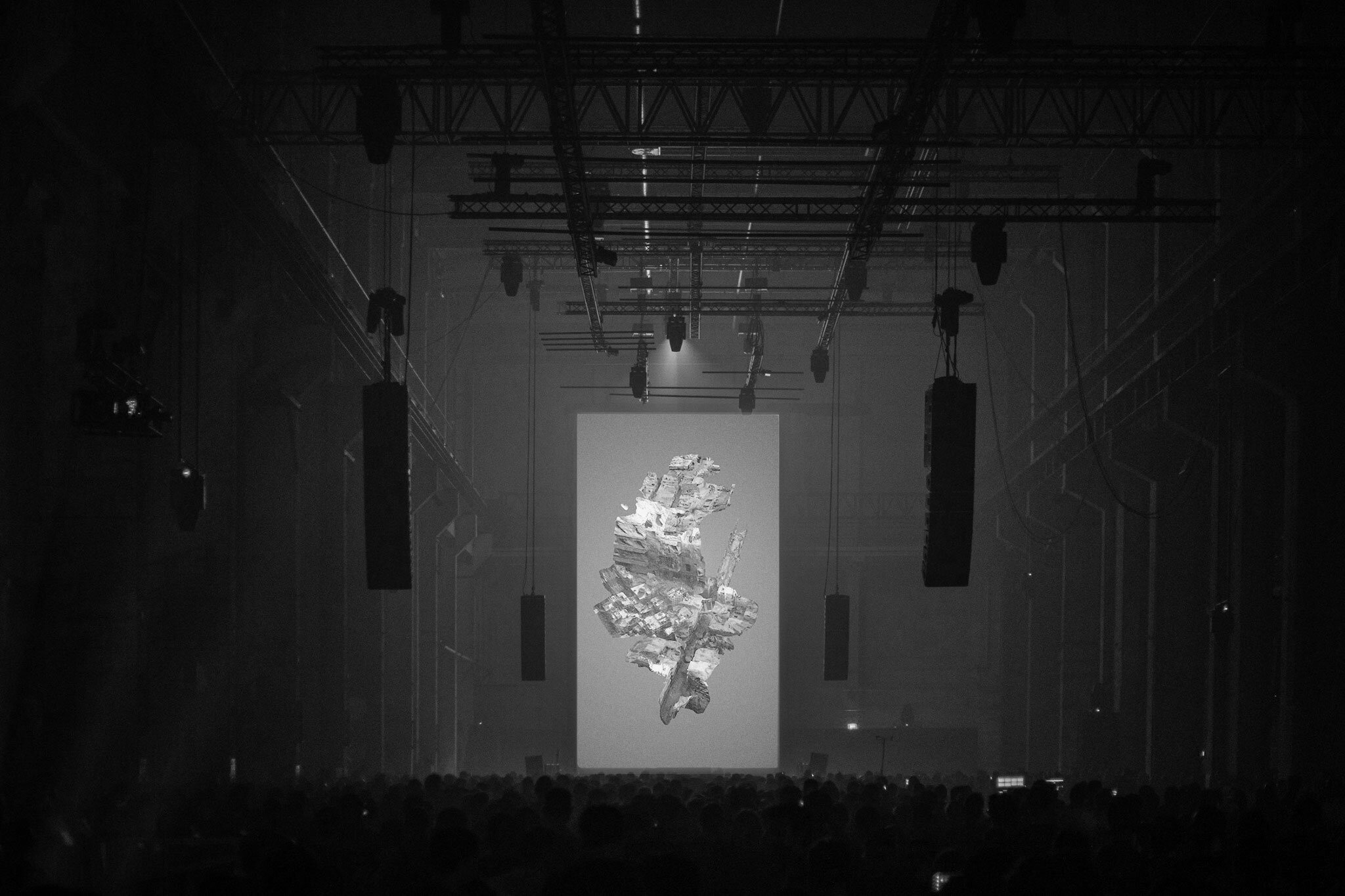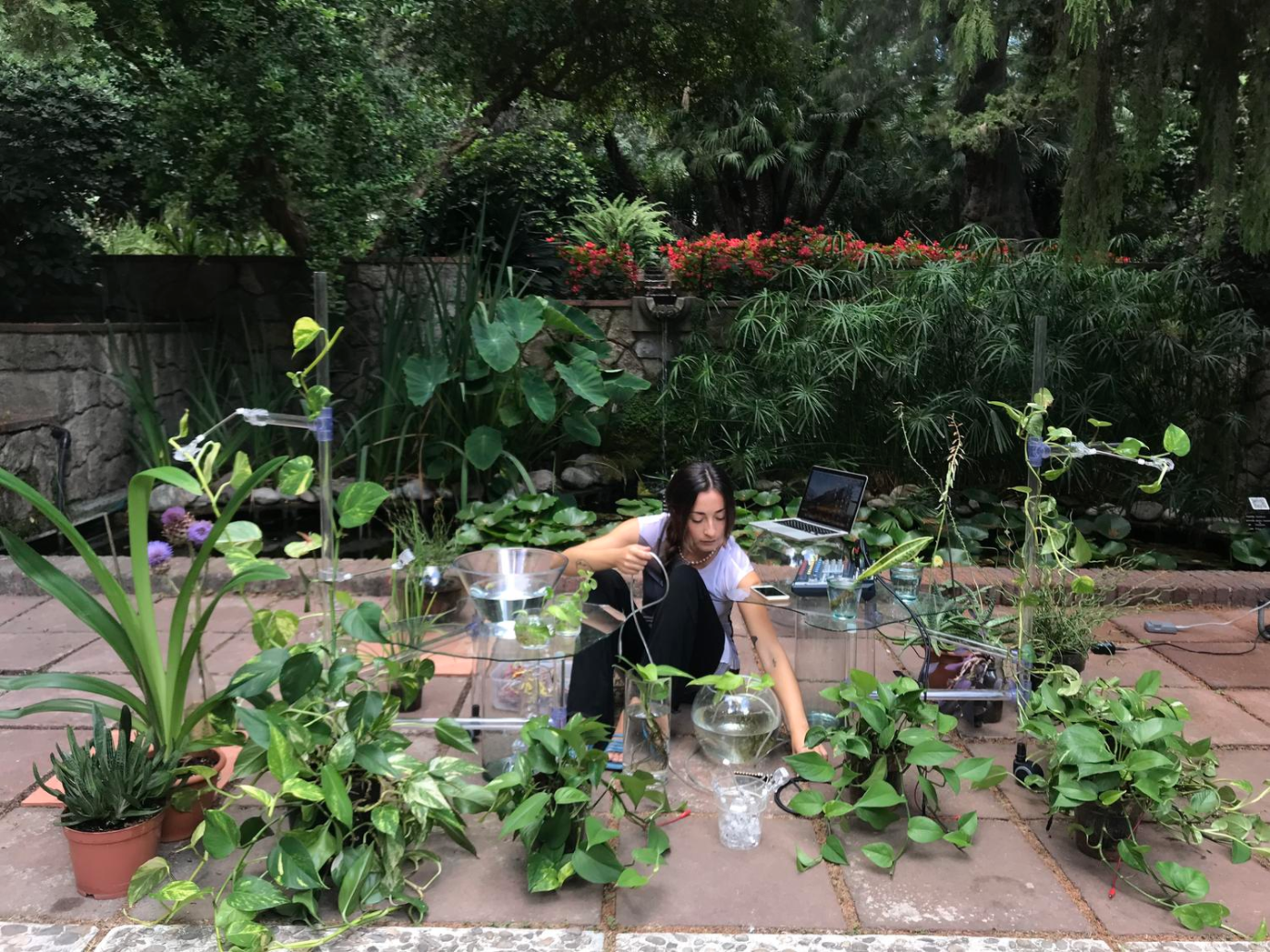Evelyn Bencicova & Enes Güç
The work of Enes Güç & Evelyn Bencicova is in constant progress. They avoid labels and will not let techniques or mediums define their practices. The work, filled with hidden details and symbols, speaks for itself.
Since meeting two and a half years ago, artists Enes Güç & Evelyn Bencicova’s practices have become more and more intertwined. Together they explore progress, process, and development of the outer and inner worlds.
Their collaborative work has been shown at Berlin Atonal, De School – Regeneration exhibition, and Galerie Barbara Thumm’s viewing room.
(un)forbidden pleasures 2019: by Enes Guc and Evelyn Bencicova, in collaboration with Tanec Praha, garments: Agf Hydra.
How would you describe your individual art practices, and how do you feel your practices correlate?
Enes: Aesthetically and conceptually, I am mostly drawn to creating realistic environments that include synthetic and/or unrealistic elements that normally wouldn’t belong there. I want to show that both can exist in the same space in harmony and balance. While I, as a person, always felt alienated and not fitting in, I wished to be able to create another reality. Later on, I found more comfort with combinations of different realities, where I could convene my different personas together in one space. I could have my inner peace, feel complete and assured that my opposing sides wouldn’t conflict.
It’s also really important for me to have small details that are almost invisible at first sight but reveal themselves if you show interest and care – showing you their depth and that everything is not how it seems. I guess I quite enjoy creating peaceful spaces with distorted little twists. I think these are also things I have in common with Evelyn.
Evelyn: Totally! I feel like we are both drawn towards disturbingly beautiful, unknown depths and in-between states – telling the story with symbols and hidden signs that need to be decoded to access the underlying layers, which even we don’t try to count. Almost like when you do something intuitively, driven by a feeling you share, and then as you look closer at the source and motivation, a seemingly infinite thread connects most unexpected things and thoughts. As Enes said — and which also relates well to my individual practice — the sterility and perfection is the facade that does not hold as much as it hides. Detail is the key, sometimes unnoticed, that leads into the collapse of the entire illusion and the discovery of another, often very different world built entirely in one’s imagination.
You both started out in classical fields – painting (Enes) and photography (Evelyn) – and eventually moved into new media, such as 3D. Could you tell us about your artistic journeys?
Enes: As I was basically living in the drawing-room in elementary school, my teacher told me that there was a fine art high school that I could attend. So that’s what I did. After high school, I decided to go for 3D animation. I was always interested in fantasy worlds, and this tool could enable me to create other universes myself – maybe I could finally be a magician.
After graduating, I moved to Istanbul, and there I started working in the 3D industry, which I quickly hated. 3D is quite a hard and time-consuming field, but I thought I needed to continue to expand my skills. I felt I needed to unlearn my classical education to expand into the new medium. But at some point, I realized I don’t need to unlearn it, but rather own it and combine it with my other abilities to make everything I do more genuine. Paintings are still one of my biggest influences — I do almost everything as if it is also a painting — but I don’t want this or 3D to be the only description of my work, since there are so many things that I’m interested in.
Evelyn: We are trying to avoid all these labels that are otherwise often a necessary part of the society we live in. I would describe my main interests as thoughts, and their translation into something tangible — whatever the final form might be.
The first medium I used but never shared was writing. That was a long time ago, and at that moment, the goal was only self-expression, highly personal or private, not meant to be seen or read by anyone else. Later on, with photography, I found the language that allowed me to become more open to outside understanding and even interpretation. But it got too static, and suddenly I was “a photographer”; it started to limit me. I realized that I don’t want to be defined by skills or tools used, but rather by what the work says.
The technique depends on a particular project, the number of possibilities and limitations that it sets for creative expression — and yes, recently 3D opened a new world of possibilities, which seems endless, but the time and effort needed to develop the knowledge to access them might be close to endless as well. It is only thanks to Enes that I can take part in creating these digital mindscapes. But at the same time, I don’t think the reason for collaboration can be defined as skills. Enes, (and hopefully myself as well) is much more than that! If the number 3 in 3D counts all spatial dimensions, we definitely aim to go further, though not necessarily in the domain of physics, if you know what I mean.
What topics are you currently drawn to in your work?
Enes: At the moment, it is mostly about progress and not about any specific results or end — personally and collectively. There are bigger topics than myself, which are more critical for our existence as a collective life form. I’m also working on these topics, but those are things that we also need to work on together. The situation we are in at the moment is proof of that. First of all, it is my own little personal growth and then the growth of my surroundings that I am connected to.
Evelyn: Exactly! Progress, process, development of the outer and inner worlds, exploration of them. In our work, we reflect on what we live and feel, critically but also giving the space for free interpretation, so everyone can find themselves in it, whatever their position is.
Could you tell us about your first professional encounter with one another?
Enes: The first two years after I moved to Berlin, I was working in a 3D animation company called Mimic Productions as an art director and an artist. That’s where I got to know Evelyn, and it was love at first sight! Best and worst intern I ever had.
Evelyn: Oh yes, I was doing a two-month internship at Mimics productions, thanks to my good friend Hermione, who offered me the spot to learn more about 3D. And Enes was teaching me. Definitely the best teacher I ever had! My skills do not show it because I discovered that learning something so complex takes much more time, but at least I got the understanding of how it all works, which is also helpful. Now we’ve known each other for almost a year and a half (even though it feels like centuries!) and have collaborated on most of the projects created ever since, one of them being our beautiful friendship.
How has your collaboration grown over time?
Enes: We first started to work on a project together for an audiovisual piece as Mitra for Berlin Atonal 2019, and after that, it was quite hard not to work together. Suddenly, we found ourselves working with each other in almost everything. I love the idea of working with people I can deeply connect with without a hierarchy. Collaboration is so amazing for that!
Evelyn: It grows every day, like we do, in unexpected directions. From the first moment, I sensed a deep understanding, which felt almost unreal — communication on the plane, where words and verbal expression are often unnecessary.
Collaboration is the most beautiful, precious, sometimes also difficult, thing that can happen to people on a professional level. I believe that it is always worth even occasional struggles because the outcome is magic, the connection of many forces, even contradictory, into one complex whole.
It would be impossible not to mention our dear friends and close collaborators Zeynep Schilling, Adam Csoka Keller, Arielle Esther, Studio Labour (Colin Hacklander and Farahnaz Hatam) and Agf Hydra, with whom we share exactly these magical moments, thoughts and inner worlds!
What impresses you the most about each other’s artistic work?
Enes: Seeing Evelyn’s work for the first time, reminded me that I’m not alone. I always thought that I needed to change myself to be more successful in my field and become something more hip, glossy, and colorful. But she was living proof that I can be who I am. I love how she sees, thinks, and how she expresses all these inputs! Looking at her work is like making everything slowly fade away, and it gently sucks you in and shows you another way.
Evelyn: I feel the same, sharing the space in which you are not lonely, or even the sharing of loneliness is suddenly turned into beauty. What impressed and impresses me is Enes’s mind-view, which soaks through each detail — the ability to see the inside in the atmosphere or gesture. To see something I understand, and at the same time, be infinitely curious about it.
Your work, both individually and together, is strikingly scroll-stopping. How important is aesthetics in your work?
Enes: That’s flattering, thank you. About aesthetics, it is one of the elements that connects everything in our works, so it is crucial. But what really matters, of course, is what’s behind it.
Evelyn: Aesthetics grows from what is under it, and that’s why it interests us, why it has the power to attract us. It is the upper layer we talked about, connected to each idea, meaningful and important if it is not an empty, isolated surface, a dead-end that leads nowhere — what I believe in our case it won’t ever be. “Scroll-stopping” is a nice word to describe it, because if you just scroll through it, you would never fully understand. The goal is not just to look but to truly see, feel, and think.
Could you tell us about ‘Work In Progress,’ exhibited online at Galerie Barbara Thumm in the Spring of 2020, what was the creative process behind this work?
First, it was about a giant figure stuck in a closed space like all of us had to be — that the space would feel smaller and smaller. But then we started to dig deeper and wanted to do something that can represent ourselves even more genuinely. So the scaffoldings came into the picture. Because we could only express what we were experiencing at the start of COVID-19, which was a transformation and that we were all just work in progress.
It’s also about how we see ourselves, how others see us, and how we really are. There are three different scales in this space. One is the scale of the figure; if you look from her/its perspective, everything is small. Then there is the eye level with the gallery space where the figure can be considered a giant, and then we have the scaffoldings and the construction site, which is the smaller scale that represents the work that we put in ourselves. From an eye-level, that can look small, but it is actually a lot of work to carry a figure like that. The work explores our thoughts on ego, self-development, and contrast of inside/outside perspective.
Fun fact, there was a construction site growing in front of Enes’s office, which we could see from the window as we worked. Only later, we realized this connection — how one thing subconsciously influences the other, both supports and limits us as we grow into this (hopefully) never-ending “work in progress.”
Enes Güç
Born in Bursa, Turkey, Digital Artist Enes Güç graduated from university with a degree in 3D Animation. His outstanding visual aesthetic is largely shaped by his earliest influences since his childhood as well as by his general higher education specialized in painting and fine art.
Through these traditional aesthetic influences, Enes manages to establish and compose 3D environments and objects under legitimacies borrowed from and situated within the realm of classical painting. Therefore, his focus lies in bringing elements of classical versus contemporary matters together in harmony and balance.
His works have been publicized and shown in various institutions and media, in Nowness, Dazed Beauty, Berlin Atonal, De School Amsterdam, among others.
See more of his work
ArtConnect Profile | Portfolio | Instagram
Evelyn Bencicova
Evelyn Bencicova (b. Bratislava, 1992) is a visual creative specializing in photography and art direction. Informed by her background in fine art and new media studies (University for Applied Arts, Vienna), Evelyn’s practice combines her interest in contemporary culture with academic research to create a unique aesthetic space in which the conceptual meets the visual.
Collaboration repertoire includes cultural institutions such as Frieze, Royal Opera House, Berghain, Kunsthalle Basel, National Portrait Gallery London and MQ Vienna. Evelyn’s work was published in international art books and exhibited in galleries and museums around the world. She also received numerous awards for both photography and art-direction including Hasselblad Masters.
In 2019 Evelyn completed an artistic residency in Mimic Studio, which shifted her practice into more immersive and experimental forms of storytelling. Audio-visual works “Next time die consciously” (2018) and “nine sum-sorcery” (2019) were premiered at the main stage of Berlin Atonal, MIRA (Barcelona) and Regenerations (Amsterdam). VR installation “Artificial Tears” was exhibited at Berlin Photo Week in Kraftwerk, Synthesis Gallery and Slovak National Gallery. The work has been nominated for Berlin Masters Foundation Award 2020.
See more of her work
Discover Contemporary Art
ArtConnect is the leading destination to discover emerging contemporary artists worldwide.
More interviews you might like



